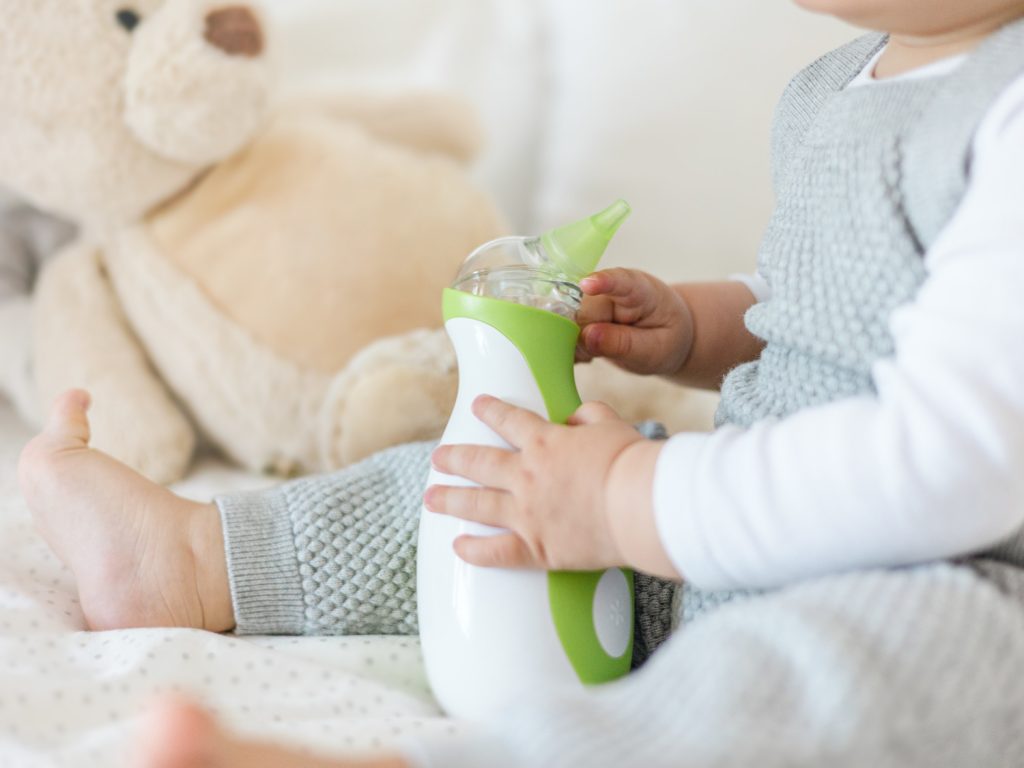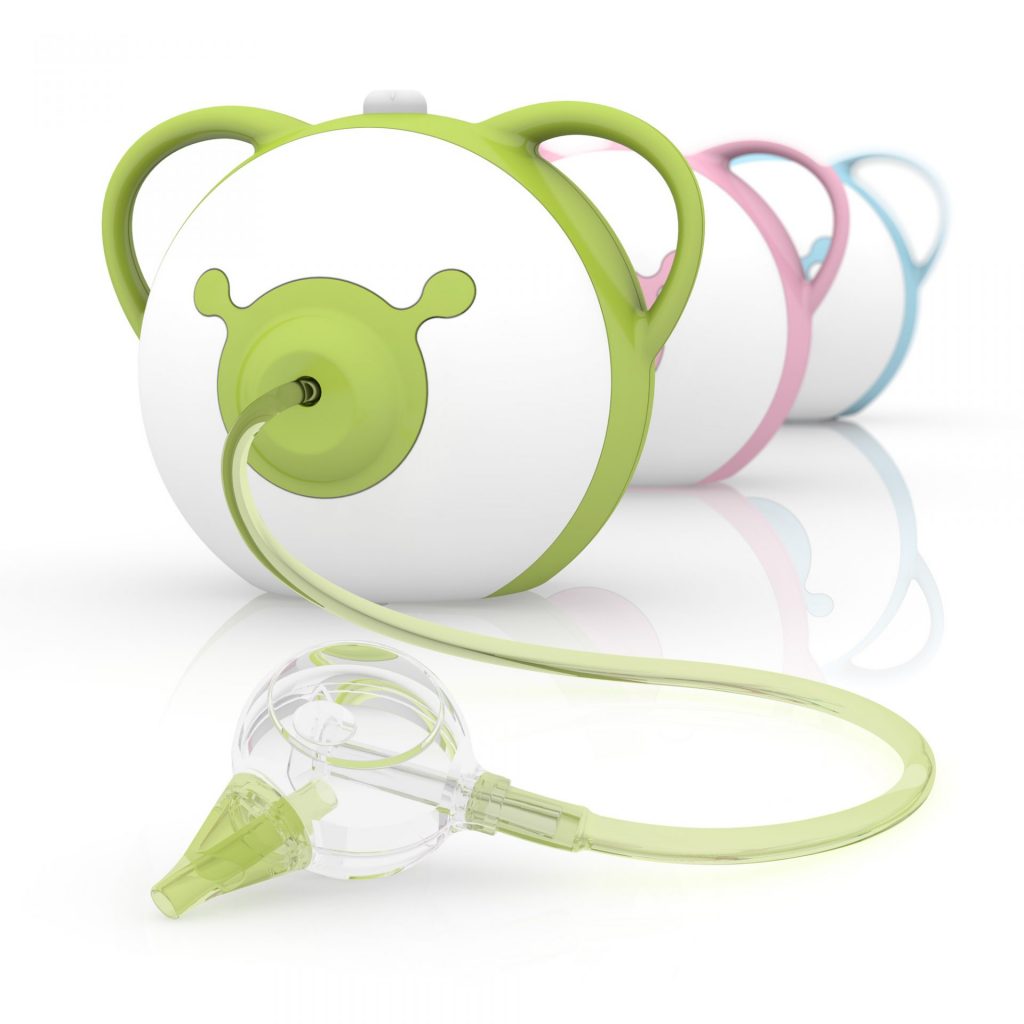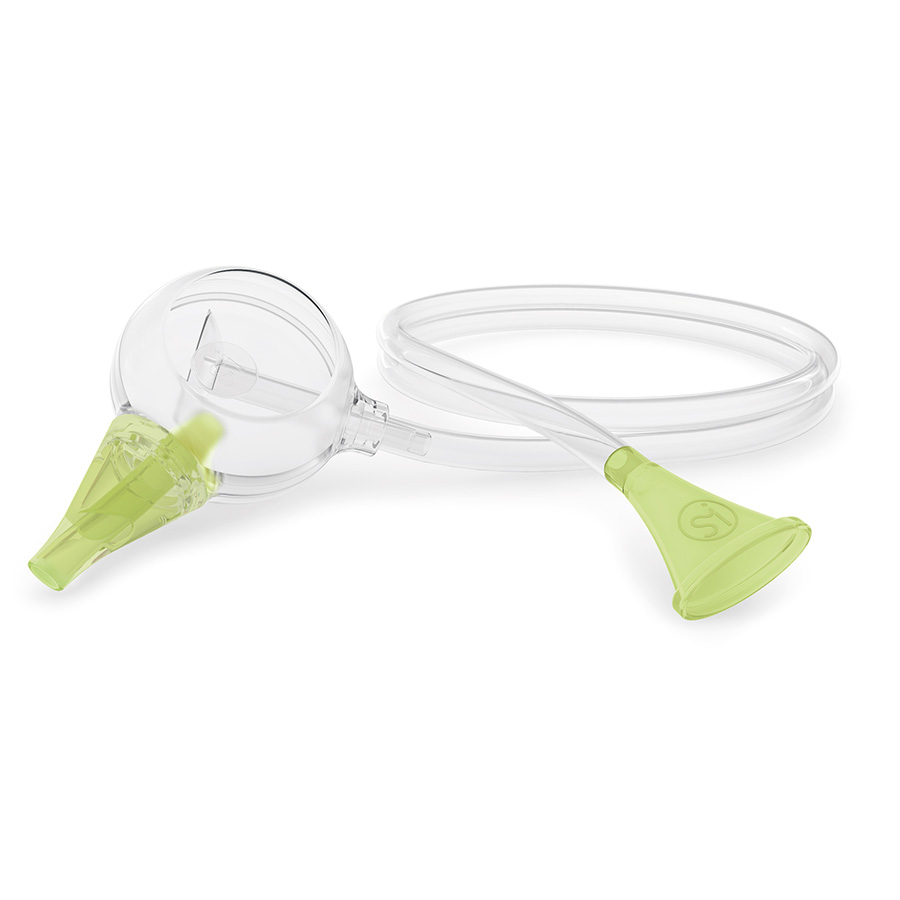

My nasal aspirator is not effective! Why?
The most common objection against using electric nasal aspirators is that they don’t work well. You probably expect us to deny that. Well, we won’t, because it’s very often true! Let us explain why and give you tips on how to choose a nasal aspirator that will clean your baby’s nose effectively.
Not an easy task
Most electric nasal aspirators available on the market operate based on outdated technology. There has been no innovation in this product category for years. Manufacturers must finally understand that it is not enough to generate any kind of suction force for an aspirator to perform well in such a specific environment as a child’s respiratory tract.
What are the requirements for an effective nasal aspirator (snot sucker)?
- It must be able to get rid of watery mucus.
- It has to reach dense secretions stagnating deeper in the sinuses.
- It should be gentle and safe not to irritate the child’s sensitive nasal mucosa.
How can all this be achieved at once?

A little bit of science
Let’s take a closer look at two parameters that create the suction power.
Suction power can be created through vacuum or airflow, but their operation is different. Simply put, vacuum is effective when direct contact can be made between the suctioning device and the secretion, whereas airflow can also suction things in from a greater distance.

Stronger ≠ better
Most electric nasal aspirators present on the market produce primarily or exclusively vacuum. You need to know that vacuum can only be generated in a completely enclosed space, and if the nose tip is in direct contact with the secretion. Let’s translate this to the child’s anatomy. The airway is not a closed system – it’s anatomically impossible. Moreover, mucus is accumulated not only at the entrance of the nose but also deeper in the nasal cavities. Therefore, vacuum is not able to reach it as it cannot make direct contact!
Even though vacuum is less efficient, it is frequently used in electric nasal aspirators because it is easy to create and measure. That’s why often a strong vacuum is communicated as an argument for the efficiency of the device. But, as we already know, it’s not as simple as that since the excess mucus in the deeper cavities (such as paranasal sinuses) remains unaffected by the usage of a vacuum-based nasal aspirator. Mucus stagnating in the paranasal cavities can cause several complications which makes the use of medications inevitable. In addition, the high level of vacuum makes the suctioning process uncomfortable for the baby. This is because with a strong vacuum the nasal aspirator only pinches the mucosa unpleasantly instead of sucking in the mucus that is around.
Nasal aspirator + airflow = ❤️
Airflow, on the other hand, doesn’t need an enclosed space to work effectively. It is very good at removing the secretions that have accumulated in the widely branched, open sections of the upper airways. Thanks to its ability to transport air, it can reach remote cavities as well, without the need for direct contact. Devices that generate airflow provide effective and safe means of nasal hygiene, that are adapted to the anatomy of the respiratory tract. It is airflow that decides the efficiency of a nasal aspirator.

Unfortunately, motors generating airflow are not cheap or easy to manufacture. However, it’s worth looking for airflow-based devices because their operation is more suitable for nasal cleaning, even with a low vacuum rate.
How to choose wisely?
To choose the most effective and safest nasal aspirator, check the technical parameters of the device.
Vacuum is measured in kilopascals (kPa) or millibars (mBar), and the airflow in litres per minute (L/Min) or litres per second (L/Sec). Make sure that airflow is present in the device you have chosen and that the vacuum does not exceed the recommended values. There are no mandatory regulations, but medical recommendations have been published, which you can find below. It is important to use the lowest effective suction power, especially for loose secretion.
| Parameter | Measurement unit | Recommended value |
|---|---|---|
| Vacuum | kPa mBar | – max. 10 kPa (100 mBar) for newborns – max. 12 kPa (120 mBar) for children up to 3 years old |
| Airflow | L/Min L/Sec | 30 L/Min corresponds to the average value of air transported by newborns |
If you’d like to know what else to consider while choosing a safe nasal aspirator, read our article here.

You can also skip researching and simply choose one of the Nosiboo nasal aspirators to be sure that you get an airflow-based, safe medical device that will take the best care of your baby’s nose. Each electric model is equipped with the latest technology ensuring effective nasal aspiration. Click here to get to learn more about the different types of nasal aspirators or choose your favourite Nosiboo model now:
Bibliography:
APCP RESPIRATORY GROUP UK. (2015). Guidelines for nasopharyngeal suction of a child or young adult. https://apcp.csp.org.uk/system/files/guidelines_for_nasopharyngeal_suction_0_1.pdf
Gtech. (n.d). Making sense of vacuum cleaner specifications. https://www.gtech.co.uk/blog/vacuum-cleaner-specifications-guide/
Helmenstine T. (2019). Vacuum Definition and Examples https://www.thoughtco.com/definition-of-vacuum-and-examples-605937
Ottaviano G., Fokkens W.J. (2015). Measurements of nasal airflow and patency: a critical review with emphasis on the use of peak nasal inspiratory flow in daily practice. https://onlinelibrary.wiley.com/doi/10.1111/all.12778



